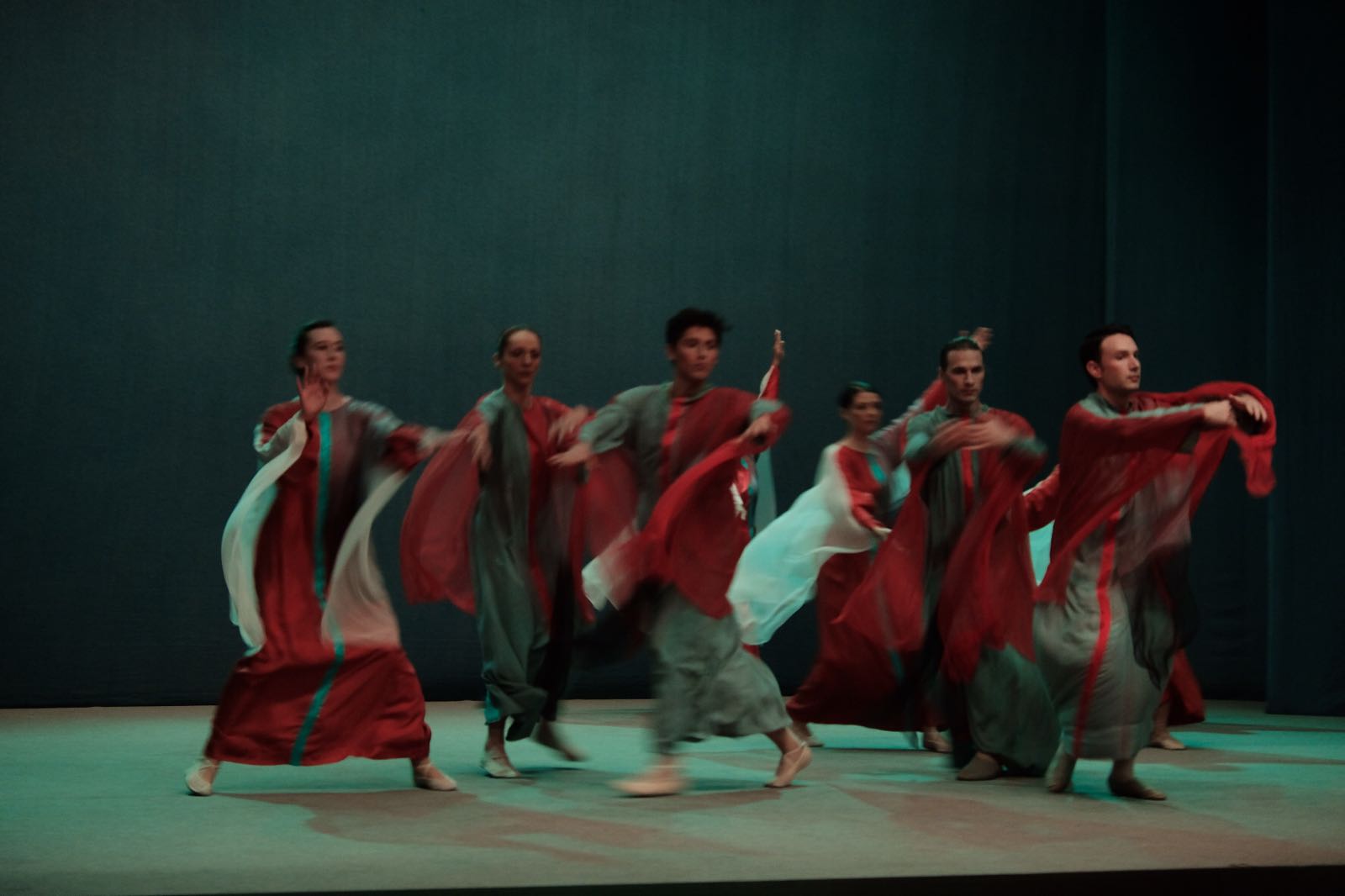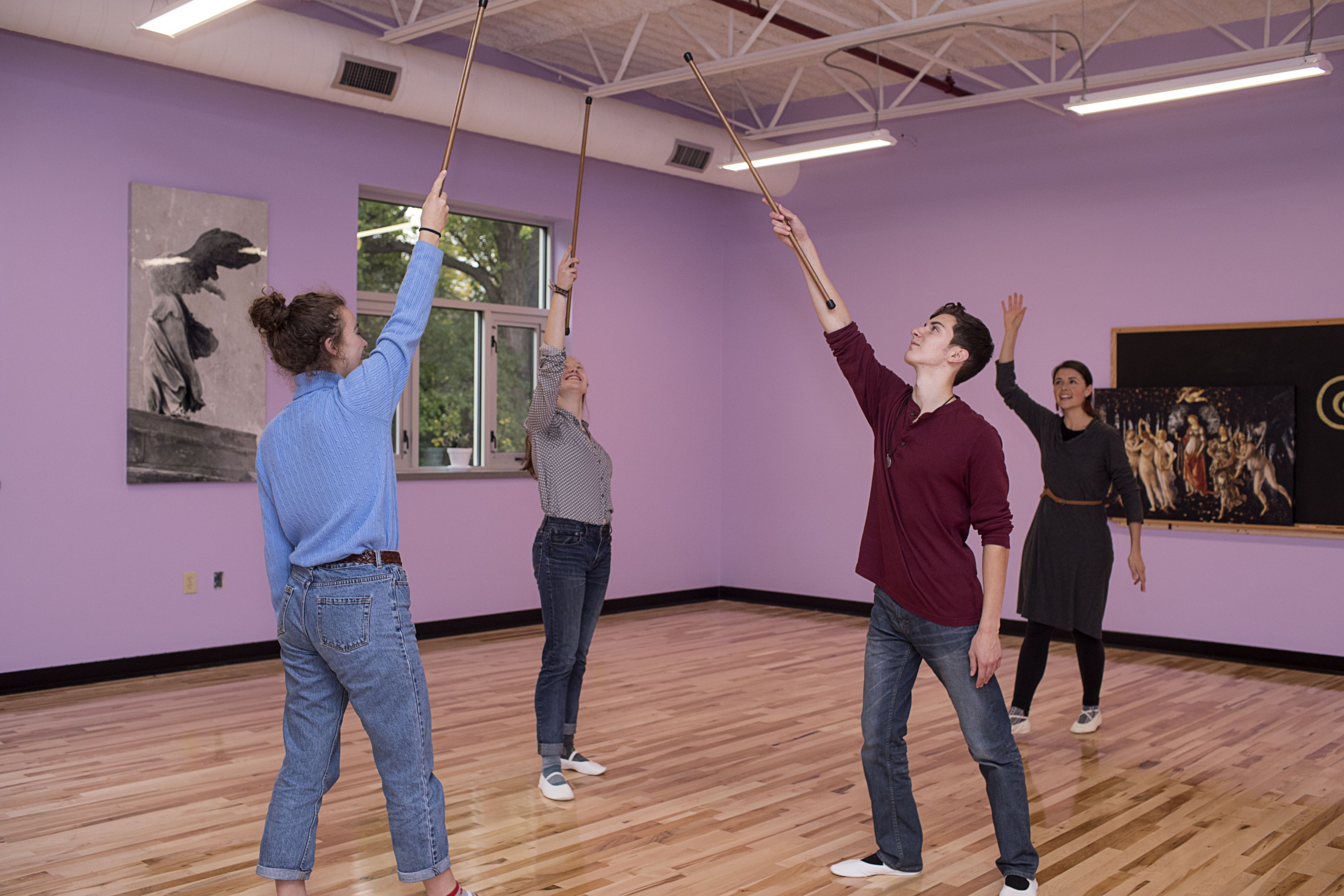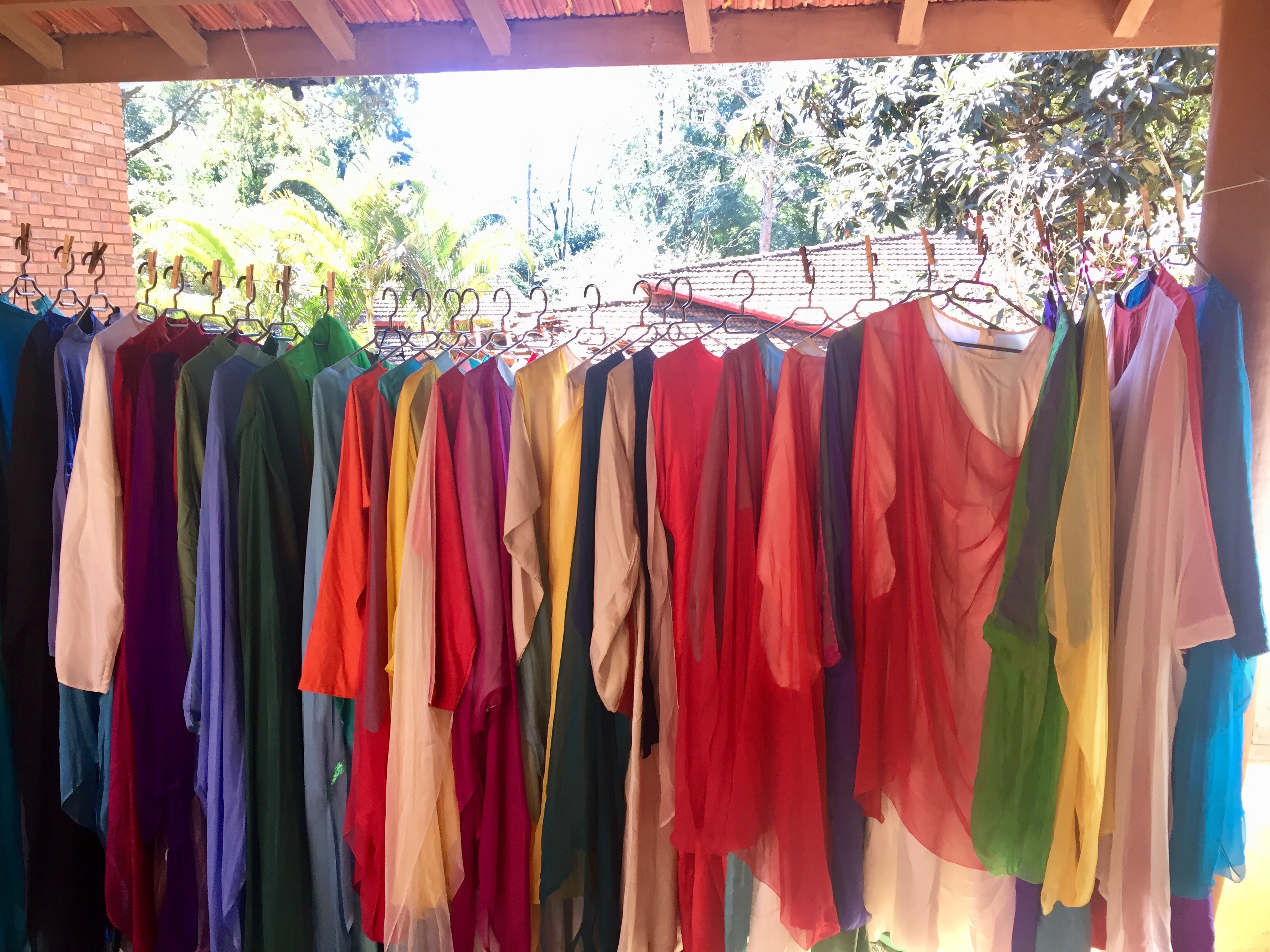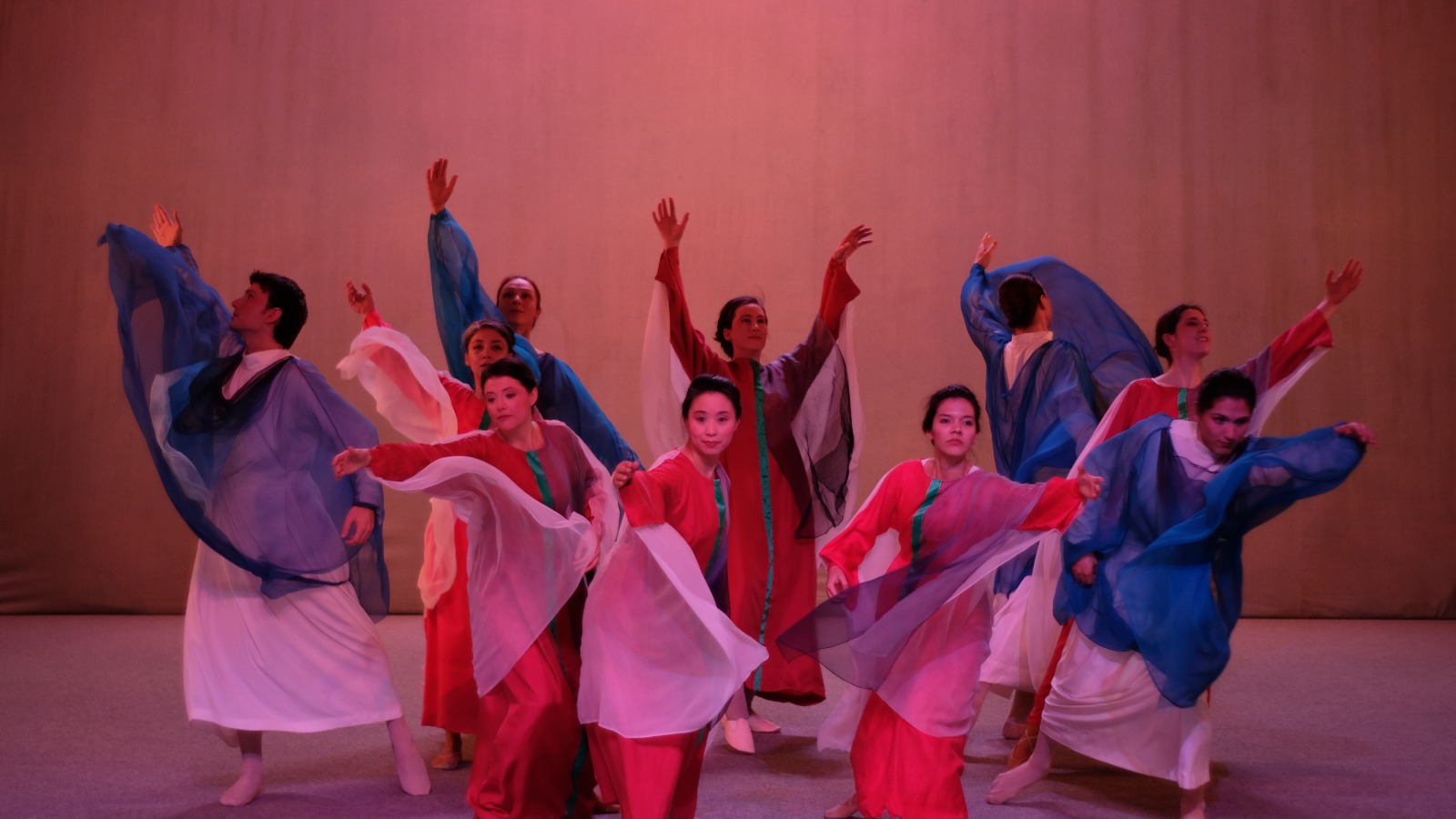

The Beautiful Art of Eurythmy
Becoming a Eurythmist

I am Colombian by birth and moved to Michigan with my family at the age of seven. It may surprise you to read that I am a proud alumna of Rudolf Steiner School of Ann Arbor (class of 2004). It is without a doubt the greatest gift of my life that I had the privilege of receiving a Waldorf Education in Ann Arbor. I attended RSSAA starting in the fourth grade. For nearly a decade after graduating from our high school I worked as a freelance musician composing, recording, organizing tours and performing internationally. During my travels across North and South America as well as Europe, I always made a point of visiting as many Waldorf schools as I could.
In my late twenties, I decided to become a Waldorf teacher and found my way to specializing in eurythmy. Since I had studied German as part of RSSAA's rich and broad curriculum, it was no problem for me to complete my four-year eurythmy training in a beautiful school in NW Switzerland, after which I received a master’s degree in Pedagogical Eurythmy from a university in Stuttgart, Germany. Destiny then brought me and my talented Israeli husband (Yoni Paz, full-time humanities teacher at our high school) right back here to Ann Arbor where it is a joy to continue discovering and deepening my love of Waldorf Education. I couldn’t have imagined a more dynamic and rewarding career than this—becoming a eurythmy teacher!
What is Eurythmy?
I ask myself this question all the time. The word “eurythmy” comes from Greek and literally means “beautiful or harmonious movement”. Whether you have had the opportunity to see a live eurythmy performance, taken part in a class, or have never even heard the word before, you may be surprised to learn that this very special movement art form is just in its infancy! Rudolf Steiner and a young German woman by the name of Lory Maier-Smits (a lively 18-year-old who loved gymnastics and dance) started developing eurythmy together in 1911. Thus, we are just entering the second century of eurythmy’s existence. It is slowly blossoming in many forms across the globe.
Today, there are several different applications of eurythmy that have been developed. This was Rudolf Steiner’s hope! He told the early eurythmists that as they helped develop eurythmy they were all planting seeds that wished to sprout and take many forms for serving and inspiring humanity in the future. The main branches of eurythmy alive and in practice currently are:
- Artistic Eurythmy: performed by professional troupes internationally such as New York’s Eurythmy Spring Valley Ensemble: http://www.eurythmy.org/photo-gallery/
- Therapeutic Eurythmy: an unique and effective therapy modality that is practiced in hospitals, clinics, special education centers, schools and private medical offices in many different countries as a form of treatment for a wide variety of conditions including cancer, depression, digestive issues, teeth and vision corrections, and much more. Here is a link to a helpful article: Spoken and Unspoken Gems of Eurythmy Therapy Dale Robinson, Eurythmy Therapist
- Eurythmy in the Workplace and as a Social Art: an application of eurythmy created to enhance productivity, efficiency, awareness, focus, creativity, resilience, communication strategies, team-building and many other skills for individuals and organizations in professional work environments. https://www.leonorerussell.com/eurythmy/
- Pedagogical Eurythmy: eurythmy specialized in supporting the healthy development and learning processes of children and adolescents at Waldorf Schools all around the world.
Pedagogical Eurythmy
I will give a brief picture of pedagogical eurythmy from my perspective. Eurythmy lessons at school are a jewel of the Waldorf curriculum. Ideally, all Waldorf students - from preschool through 12th grade - would have eurythmy every week, all year long (though this is hard to achieve as the number of Waldorf schools far exceeds the number of trained eurythmists!). These lessons are a time when each student gets to be engaged directly and holistically through graceful, meaningful movement to music, poetry, stories, and geometry.
Eurythmy is often defined as “visible speech and visible music”. There are specific arm, leg, head, and full body gestures that express the different sounds of language, aspects of grammar, and parts of music (tones, chords, intervals, rests, etc.). Waldorf students get to learn many of these gestures along with ways of expressing language and music through group choreographies and exercises.

Eurythmy teachers strive to weave the different aspects of their lessons together in artistic and developmentally appropriate ways. The goal is always to support each child’s physical, soul, and spiritual growth in ways that are healthy and inspiring. On the physical level, they learn new gross and fine motor skills, to strengthen their sense of balance, coordination, and agility. Their souls are touched and expanded by the social and creative nature of the eurythmical activities. As they deepen and refine their awareness of and relationships to music and language, the students are provided with opportunities to experience some of the most beautiful forms of human expression we are capable of—ones that define our very human essence, that raise us to our divine spark.
A strong, basic pedagogical eurythmy curriculum for each of the grades has been developed across many countries, in many languages, and is constantly being expanded. It is often referred to as “the heart” of a Waldorf school, as it has a unique and potent ability to harmonize classes on many levels (socially as well as academically). Having eurythmy throughout the years provides students with an orientation in space and time that they create in themselves. This is empowering—it brings a sense of confidence and security in the world.
Eurythmy lessons are meant to be fun, but they are also hard work! For some students it is among the favorite subjects during the week. Other students may complain about eurythmy or claim they dislike it in varying phases of their time at school. This is especially common during adolescence when many are going through great physical changes that can cause them to experience movement as more physically cumbersome than before, while their sense of being watched or feeling exposed is also heightened.

I think both the enjoyment and the struggles students of all ages experience while doing eurythmy arise because eurythmy is very demanding. It can be extremely challenging to refine one’s physical coordination, spatial awareness, musicality, and connection to language SIMULTANEOUSLY! Not to mention, it requires students to work on all of these skills individually as well as collaboratively and cooperatively as part of a group. All of this is precisely what we eurythmy teachers require our students to do and it is a tall order. It is always my hope that each student and each class as a group will be pushed to their growing edge through their eurythmy lessons with me, which I expect to come with its awkward moments as well as well-earned experiences of satisfaction and joy.
In some Waldorf schools in Europe, high school students are required to dedicate a whole semester’s eurythmy lesson time to choreographing, costuming, and performing a eurythmy solo (using all the skills they learned in the years leading up to this) in order to graduate! There are also wonderful traditions in many countries of having older classes create colorful, musical eurythmy performances of fairy or folk tales for the children in younger grades and for school families. I look forward to creating eurythmy traditions of these kinds at our school with time.
Eurythmy at Rudolf Steiner School of Ann Arbor
A unique aspect of our eurythmy program at RSSAA is a growing number of collaborations between me and the high school main lesson teachers. We have designed eurythmy lessons as an enhancement of the science and humanities main lesson curriculum for our 9th-12th graders. These eurythmy-main lesson collaborations have taken place in blocks such as Biochemistry, Cell Biology, Astronomy, Embryology, Zoology and Evolution, Botany and Insects, Art History, Parzival, Dante’s Divine Comedy, and Projective Geometry. My goal has been to provide our high school students with ways of artistically and physically moving key elements of their academic subjects. In other words, I strive to translate some of the quintessential aspects of the academic material they study into eurythmy forms and exercises to provide visual, kinesthetic, and collaborative modes of diving into their course material. This has proven itself to be a fun and successful new development of our high school and I am very excited to continue expanding it with my talented colleagues. My master’s thesis describes some of these collaborations and I am hopeful that a book version of it will be published sometime in 2022.
I welcome your questions (apaz@steinerschool.org) and look forward to gradually growing a robust and unique eurythmy program at Rudolf Steiner School of Ann Arbor over the years to come!

